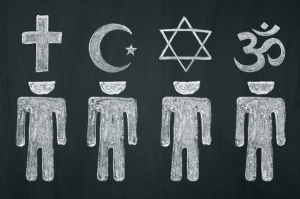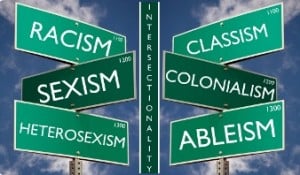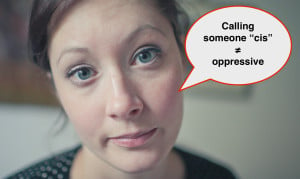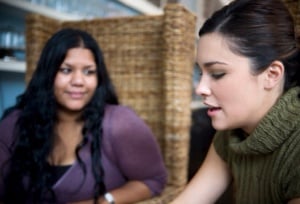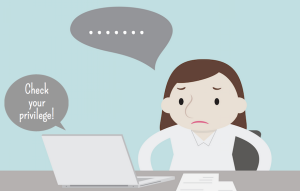I saw The Nutcracker last holiday season. This wasn’t just any Nutcracker production, however.
Misty Copeland, the first Black woman awarded principal dancer for the American Ballet Theater, was playing Clara, the princess in the show, and I was excited to see a Black ballerina take the lead.
However, Misty seemed to be one of very few dancers of color. For the first hour or so, I watched the performance wondering why the cast was so white.
I know ballet isn’t known to be the most diverse style of dance, but since Misty and several other Black ballerinas have broken barriers, I wondered why the rest of the cast remained so status quo.
I had so many more questions: Were audition notices not accessible to dance communities of color? Do you have to know the right people to audition for this dance company? Are not enough ballerinas of color classically trained? Are ballet classes expensive? What additional barriers make ballet inaccessible? How do we break down those barriers to make ballet more inclusive?
I couldn’t answer these questions myself. But they lead me to another realization: The ballet industry isn’t the only industry that’s so white.
How many of the organizations that I belonged to look like the cast of The Nutcracker? How many college classrooms, job industries, social clubs, board meetings, government agencies, and other organizations look homogenous?
Most organizations don’t intend to lack diversity. Some try to fix that deficit through purposely seeking to diversify their industry, staff, classrooms, and so on.
Many hire diversity outreach coordinators, set up programs welcoming marginalized groups, and find numerous ways to recruit people of various backgrounds into their organization.
Their efforts are a good start. But what they don’t understand is that they really need inclusion.
Inclusion could potentially mean the difference between one or two ballerinas of color in a dance company and a company of dancers from many different backgrounds.
You might be asking yourself, “What’s the difference between diversity and inclusion?” Let’s talk about it.
For easy understanding, we’ll use the word “organization” to describe any group that has a problem with diversity or inclusion. That includes companies, schools, non-profits, clubs, industries, and so on.
Diversity Makes White People Feel Better About Themselves
In ideal situations, diversity means people from various backgrounds get a seat at the table.
But diversity is often used in self-serving ways, especially when an organization is trying to prove it’s progressive when it actually isn’t.
An example of this are those college admissions pamphlets where they feature a small group of college students of different races and ethnicities on their brochures in an attempt to sell an image of diversity that oftentimes is a lie.
In other instances, diversity has also been used as an excuse or defense when someone is called out for problematic actions. This happened quite a bit after the January Women’s March received a lot of criticism for being exclusionary, when some trans march attendees expressed concern about the uterus and genital-centric messages.
Yet, to prove inclusivity, I witnessed many women say, “But Angela Davis was the keynote speaker! But women of color were some of the organizers. But they had sign language interpreters at the march.”
Of course, all of that is fantastic. Yet, we shouldn’t use “diversity” as a way to ignore the ways in which the march could have done a better job of including all women.
When diversity is used as a method to silence critique, it becomes a word that allows privileged folks to pat themselves on the back and feel comfortable with the supposed effort they made at the expense of everyone else.
We have to do better with the use of the word diversity. And we have to acknowledge what diversity actually means. For example, pointing out the people of color in a space doesn’t necessarily show signs of adequate representation.
Here’s why:
True Diversity Includes More Than Just Race
When people talk about a lack of diversity, they usually mean a lack of people of color.
But race is only one facet of diversity. Diversity can include race, ethnicity, gender, age, socioeconomic status, disability, sexual orientation, educational background, religion, and more.
Additionally, people touting diversity should be careful about taking the Donald Trump approach, which is hiring a handful of Black people and women simply because they agree with you (or will tolerate your bullshit for a check). When he named Omarosa Manigault as director of communications for the Office of Public Liaison, and Ben Carson Secretary of Housing and Development, he did just that.
Having people of various backgrounds in your organization means people will disagree from time to time. When you’re organization is truly inclusive, you don’t have a team full of “yes men” okaying all of your decisions. People will hopefully tell you, from their different perspectives, how to alter your problem-solving approaches.
For example, I work with a team of people who moderate Everyday Feminism’s Facebook page. This team intentionally includes people with various backgrounds, taking into account more than just their races.
It includes people of different genders, religions, educational backgrounds, socioeconomic status, people who are neurotypical and neurodivergent, and more. These differing backgrounds helps us problem-solve when we’re moderating the page.
Inclusion Means Changing the Culture of an Organization
Inclusion takes diversity a step further.
The best way I learned this was from one of my mentors in college, Dr. Jaye Goosby Smith. She uses a garden metaphor to compare the two, and explains diversity as quantity and inclusion as quality. She says diversity is the vegetation planted in garden and inclusion is the soil.
“Inclusion has to do with all of the conditions that make people willing and able to bring their best to the organization to achieve a goal,” says Smith.
If you want to plant tomatoes or roses into that garden and you find a bunch of rocks in the soil, you can’t just start planting. You have to fix the soil first, she explains.
If we continue with Dr. Smith’s garden metaphor, you can understand that if you try planting strawberries in your garden, and the soil conditions aren’t appropriate, the crop may not grow to it’s fullest capacity, or may not grow at all.
So what I’m trying to say is if you hire people from different backgrounds, but you have not changed your company culture to make it more inclusive, your employees may struggle to reach their fullest potential.
They may be bumping up against glass ceilings due to discriminatory promotion procedures, discouraged by microaggressions, or are missing key information because for instance, you refused to caption your training videos and hire a sign language interpreter, like they’d requested.
I remember tutoring a student in the writing center of my college campus several years ago. She was applying to a historically Black college. When I asked why she wanted to transfer schools, she said, “it’s too white here.” I understood exactly what she meant.
Our college had more people of color than many other predominantly white schools, and the school partnered with organizations to recruit students of color. But because the culture was challenging, and sometimes hostile, for students of color, it still felt unwelcoming.
My school could recruit as many students of color as it wanted, but until the university confronts its problem with toxic whiteness, students of color will not feel as welcome as their white counterparts.
The truth is inclusion will not happen naturally. Inclusion involves effort. A lot of it.
Members of an organization have to do more than simply invite marginalized people into their spaces. They have to make sure their spaces aren’t hostile for the invitees. They have to make sure their spaces are accessible, and they have to work to rid their organizations of oppressive practices that make marginalized people feel unwelcome.
Organizations can do this in a number of ways. They can start by asking themselves some of the questions I asked while watching The Nutcracker ballet: Is this an organization or company where someone has to know the right people in order to get in?
Are the invitations to join the organization or notices for openings at the company not accessible to certain marginalized communities? Are certain communities not trained in the skills needed to join the organization? If so, what is our role in the training process? What barriers makes the organization inaccessible? How do we break down those barriers to make it more inclusive?
The organization should also evaluate their hiring or intake procedures to see how they may be excluding marginalized groups. They can look at how certain biases reinforce welcoming people of similar backgrounds into the organization.
Additionally, some organization members will need sensitivity training, and have to have those uncomfortable discussions on privilege and oppression.
Companies can also look at how leave policies, child care options, and lack of work-life balance create hurdles for parents in the workplaces. Organizations may also need to look at their leadership to ensure that it reflects the communities they work with or serve.
Organization members also have to notice the ways in which people are resistant to change.
Sometimes something that requires minimal effort, like providing content warnings in classrooms to accommodate folks who’ve experienced trauma or using gender-neutral language in discussions on reproductive rights to include trans people, sparks loads of pushback.
Sometimes people are afraid to venture even an inch from the status quo to be accommodating.
But inclusion can’t happen unless people within organizations acknowledge how their usual practices can be exclusionary and oppressive. And they have to put in the work it takes to replace those practices.
Inclusion Benefits Everyone
Statistics show that companies with diverse staff perform better financially.
According to a 2015 study by global consulting firm Mckinsey & Company that looked at public companies in Canada, Latin America, the United Kingdom and the United States, companies with the highest racial diversity were found 35% more likely than other companies to see a financial profit.
Beyond numbers, including people of different backgrounds also brings in creative ideas.
Human rights advocate Elise Elroy explained in her 2015 TedTalk that designing technology and spaces that are accessible for disabled folks can lead to the creation of more innovative technology. Inventions originally designed for deaf and disabled people, such as text messaging and the OXO potato peeler, proved helpful for everyone else as well.
Inclusivity isn’t just for the benefit of underrepresented people.
Organizations also benefit when they’re inclusive. If you’re looking for an increase in sales and creative ideas in your organization, inclusion is the way to go.
When you bring together people with different experiences, they’re able to look at things with differing point of views. They may bring a unique approach to problem-solving, increasing revenue, educating audiences, or whatever the organization’s mission is.
Inclusion Values Everyone’s Humanity and Differences
No one should feel like the only value they bring to the space is being the one different face in the crowd. That’s often the problem with organizations seeking diversity for diversity’s sake (or for bragging rights).
If you’re diversifying your organization, the new members should feel valued and respected as equal members of the team. They should also feel like their differences are respected.
Diversity for diversity’s sake is about numbers and filling quotas. It can be dehumanizing. Inclusion, on the other hand, is about people and the value of their input in an organization.
***
Organizational leaders need to really think about why they want a diverse team and they have to be honest with themselves if they want to be truly inclusive.
At the same time, they need to acknowledge that creating an inclusive space requires a lot of work. But if we want companies, class rooms, industries, movements, and the people involved in these spaces to thrive, it’s worth the effort.
[do_widget id=’text-101′]
Shae Collins is a Contributing Writer for Everyday Feminism. She enjoys educating and uplifting by aiming a black feminist lens at pop culture on her blog. She’s been published in EBONY, Ms. Magazine, For Harriet, and Blavity. Laugh with her on Twitter @ShaeCWrites. Read her articles here.
Search our 3000+ articles!
Read our articles about:
Our online racial justice training
Used by hundreds of universities, non-profits, and businesses.
Click to learn more
Most Read Articles
- « Previous
- 1
- …
- 30
- 31
- 32






